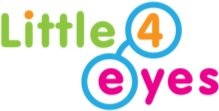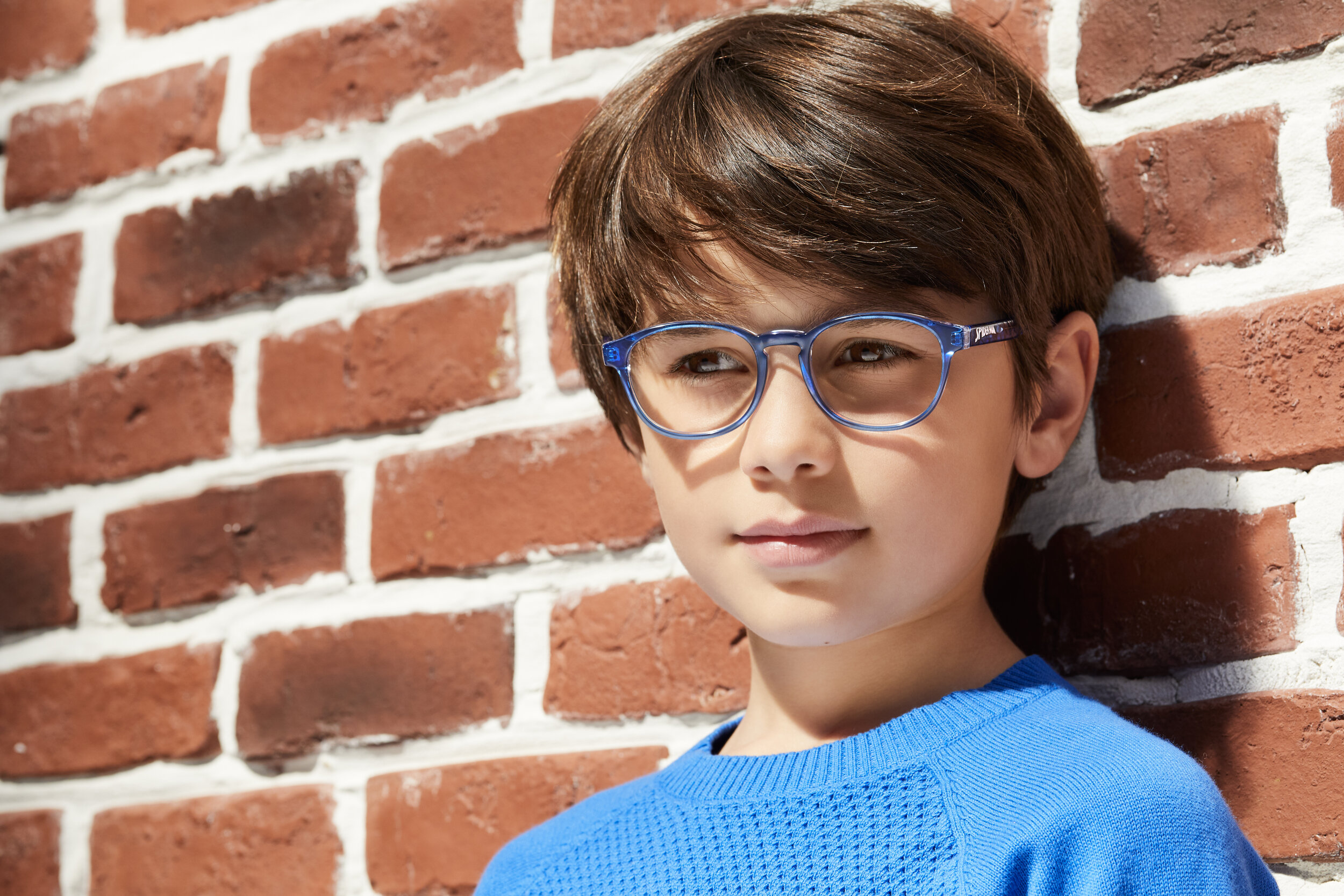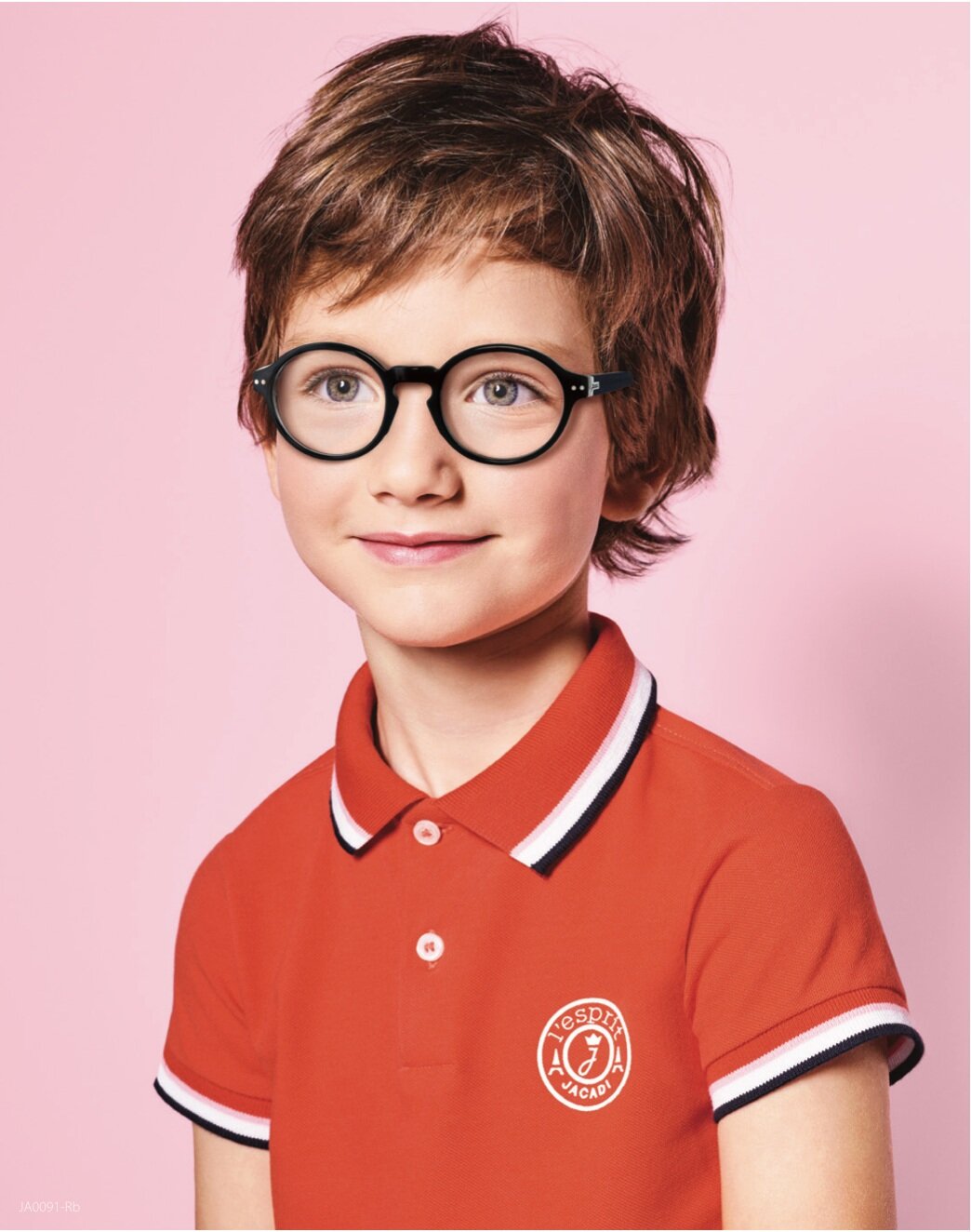The Art of Fitting Children’s Glasses
Kiddies Eye Care - GEELONG, VIC
Children these days are so lucky to have the variety and options in eyewear that they do. Colours and patterns, shapes and details which I never could have even imagined myself when I was a child - there really is a style to match every little face. Whilst the child in me marvels at the options that there are available like a kid in a candy shop, as an optometrist, what I get excited about most is the improvement in the ranges of shapes and sizes. This variety makes me feel confident that there is a frame out there which fits every personality and face perfectly in tandem.
When it comes to glasses, one size never fits all. Two, three or four sizes - for that matter - don’t fit all either.
Each child is unique in their personality, but also unique in their facial features, making selecting the perfect pair of glasses more than ‘I saw a picture online and I like them’. Alike to shopping for clothes, whilst you may be one size in one style or brand, you can be a completely different size in another, so shopping online just isn’t realistic. It takes time, patience and also a bit of trying on to make sure we help you select the right frame - one that fits both your child’s unique self as well as their face perfectly. Unless they are fully customisable (temple lengths, nose bridges and come in a number of sizes) and built to tailor-fit your child’s face, it’s probably not worth your time, money and effort.
I teamed up with one of our fabulous optical dispensers to make a list of the most important things that we look out for when selecting a pair of glasses for one of our young patients.
Firstly, is it the correct size? A frame that is too wide across the eye region will look overly-oversized and also be difficult to fit correctly to prevent the frame from sliding down. Alternatively, a frame that is too narrow will be outgrown too quickly and also be uncomfortable to wear as temples will press into the side of your head. This is one of the main reasons why simple ‘small, medium and large’ sizing is impossible when it comes to children’s (and even adults, for that matter!) eyewear sizing. Children grow so rapidly that we can’t possibly compare the size of a four year old to the size of a seven year old - it’s just unrealistic. A perfectly fitting pair of glasses will look great for right now, as well as provide some room for growth over time. A wide scope of sizes will ensure that this perfect balance can be achieved.
Secondly, are the temples (arms) long enough to be fitted and curled around the ears? If they are too short they will not be able to be adjusted enough to hold the frame in position. Conversely, if they are too long they will be visible and potentially irritating along the curvature of the ear. Temples are a key to stabilising glasses onto your child’s face, helping them stay secure.
Thirdly, the bridge size - the importance of this is very often understated and a major reason why limited options are a big ‘no no’. A lot of young children have not developed a sturdy nose bridge for a frame to take hold of on their face. When trying glasses on, we ensure that the bridge sits nicely on the nose and will not slip down easily. (If they do slip, ultimately, the lenses will slip too, so your child could be looking through the incorrect part of the lens.) Regardless of how the temples are curled around the ears, if the nose bridge fits incorrectly, sliding is inevitable. This makes finding a bridge that is neither too narrow or too wide absolutely crucial! If your child does not have much of a bridge, a ‘keyhole’ bridge offers a good grip to prevent the frame from slipping and therefore will offer maximum vision through the lenses.
Fourthly, are the frames too deep or too shallow? Glasses are ultimately the window-frame for your lenses, which should be positioned well. This means finding a frame that is not too shallow that it will provide a limited lens area, but also one that is not too deep. If lenses are too deep, the frames can often sit on the child’s cheeks and both be uncomfortable or fog up during use. We also need to make sure that the lens shape is suited to your child’s face - if they are sitting incorrectly (too low or too high), ultimately your child may be looking through the wrong part of the lens which is effectively the equivalent to looking through the wrong prescription!
Fifthly, keeping all these considerations in mind, depending on the type of lens design you have (and there are many!) your optical dispenser and optometrist will indicate what frame styles are suitable for what is being prescribed.
Your trained and experienced optical dispenser will be able to assist you with finding the perfect pair of glasses. There is so much variety when it comes to children’s frames, with a plethora of colours, designs and styles. A real highlight in my job is seeing children’s eyes light up when they see so much colour, vivacity and fun on the shelf.
However, what makes choosing children’s glasses a real art (and not as easy as expected!) is ensuring that they both look good, fit well and feel great.
The reality is, finding a pair of glasses should not be ‘easy’ - if you want the right fit, it’s frankly impossible to be a two-second job or simple click - but it certainly will be less of a challenge (and probably will even be a lot of fun!) with a trained dispenser who can guide you in your selection.
Sometimes it takes five tries, and sometimes it takes fifteen, but we are confident that you and your child will leave knowing they have made the right choice, both in style but also in fit.
Nicky and Robyn - Optometrist and Optical Dispenser
Click and highlight the images below to see key features of these glasses which them fit perfect as well as look great!




